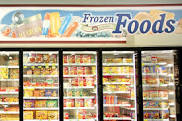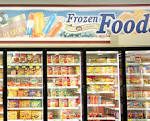Fruits and vegetables are the nutritional powerhouses of your diet. They are full of vitamins, minerals, fiber and phytochemicals that may protect against cancer, heart disease, stroke and other health problems. Not only are the fresh fruits and vegetables more expensive, sometimes the pickings are slim in the produce aisle. Should you choose frozen instead? Yes, absolutely.
In 1998, the Food & Drug Administration (FDA) confirmed that frozen fruits and vegetables provide the same essential nutrients and health benefits as fresh. It’s no wonder. Frozen fruits and vegetables are nothing more than fresh fruits and vegetables that have been blanched (cooked for a short time in boiling water or steamed) and frozen within hours of being picked. So the frozen fruits and vegetables are processed at their peak in terms of freshness and nutrition.
With the economy the way it is people are trying to save money when doing their grocery shopping. It’s perfectly fine to buy the frozen fruits and vegetables. It usually is cheaper too.
I usually steam vegetables whether they are fresh or frozen. But you can also make a kind of casserole with the frozen veggies or throw them in with your pasta for pasta primavera (using whole wheat pasta of course).
As far as the frozen fruits, I like to put a handful of frozen raspberries or blueberries in my oatmeal before I microwave it in the morning. They defrost in the microwave and add a little sweetness to the oatmeal. I also get to check off one fruit for the day.
In the summer, I use the frozen fruit to make smoothies for our afternoon snack when the kids are home.
Here some easy ways to sneak more fresh and frozen fruits and veggies into your diet.
- Buy many kinds of fruits and vegetables when you shop. Buy frozen and dried, as well as fresh fruits and vegetables
- Experiment with new types of fruits and veggies
- Keep a fruit bowl, raisins or other dried fruit on the kitchen counter and in the office
- Keep a bowl of cut-up vegetables on the top shelf of the refrigerator for snacking
- Choose fruit for dessert and use frozen fruits for smoothies
- Add fruits and vegetables to lunch by adding them in soup, salads, or cut-up raw
- Add extra varieties of frozen vegetables when you prepare soups, sauces, and casseroles
Holly Kouvo is a certified Personal Trainer, Nutrition Specialist, speaker and writer who specializes in helping people lose hundreds of pounds. Learn more at www.FittingFitnessIn.com.


